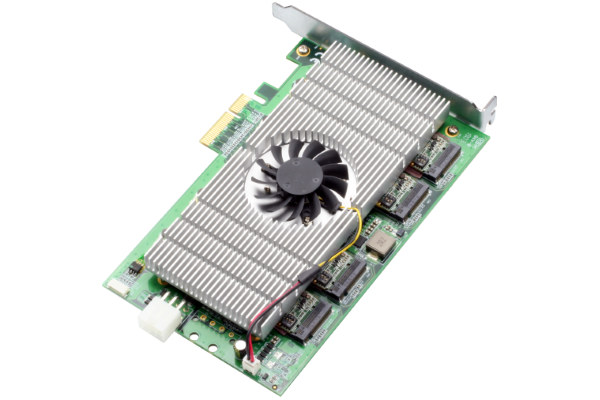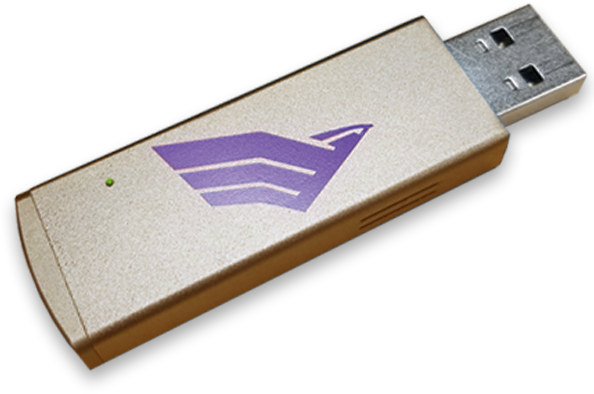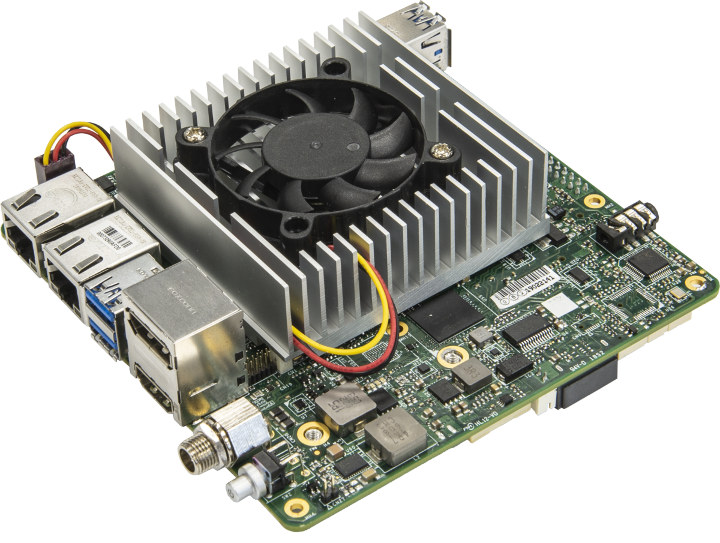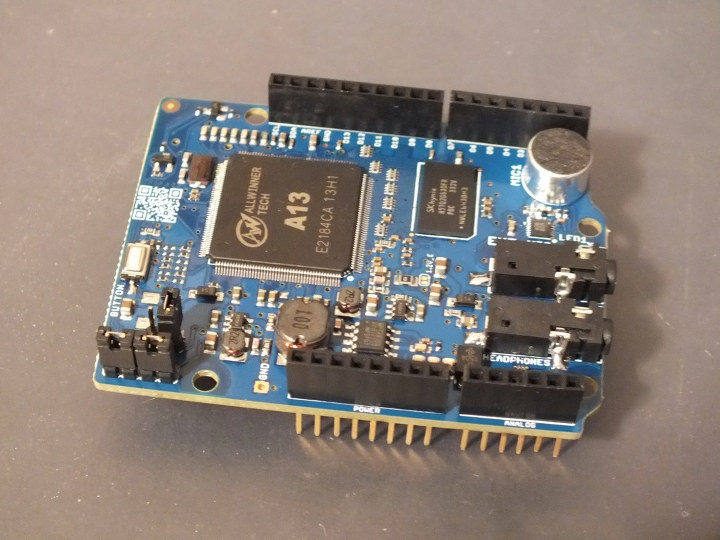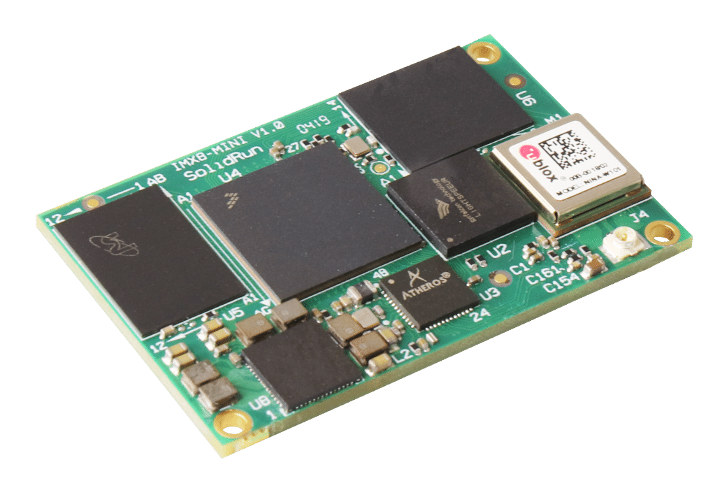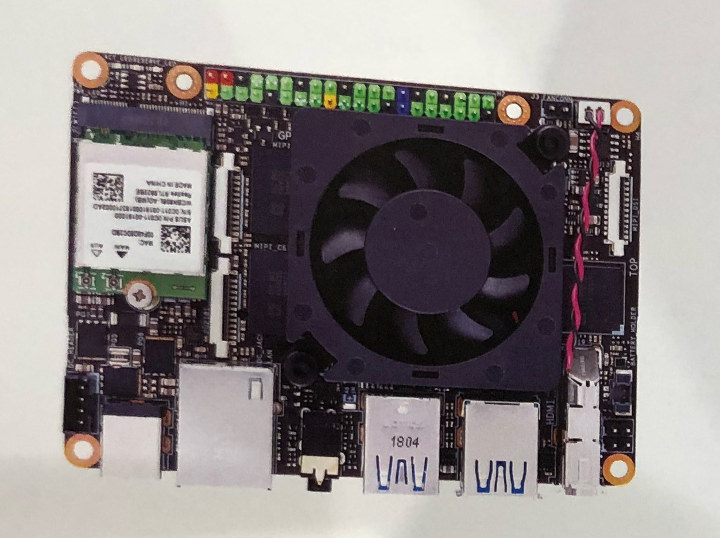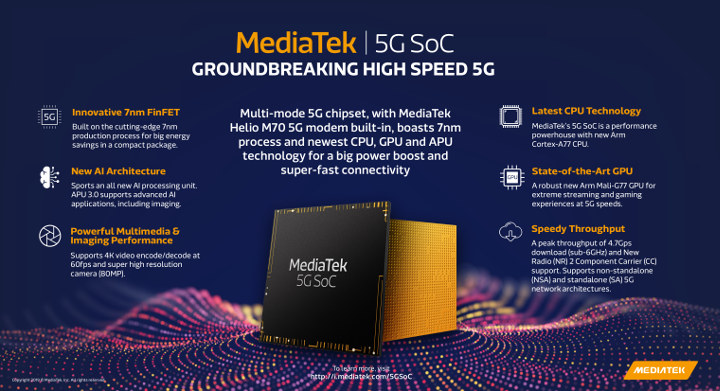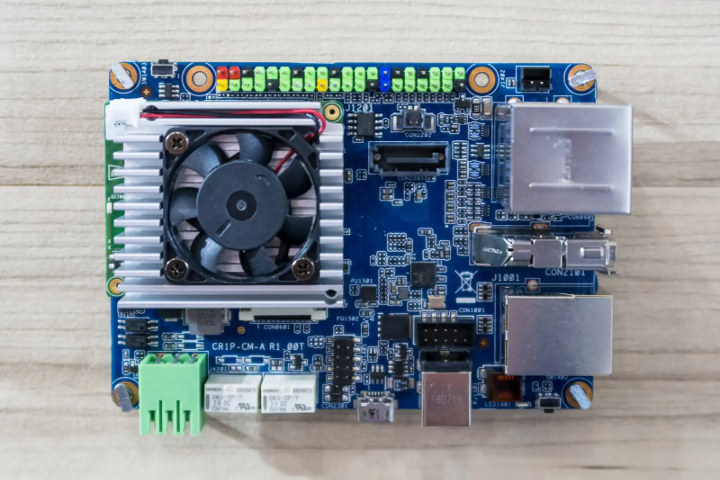Movidius Myriad X is Intel’s latest vision processing unit (VPU) first unveiled in 2017, and available for evaluation in Intel Neural Compute Stick 2 since the end of 2018. Later on, AAEON also launched their own AI Core XM2280 M.2 card equipped with two Myriad X 2485 VPU’s and capable of up to 200 fps (160 fps typical) inferences, thanks to over 2 TOPS of deep neural network (DNN) performance. But what if you need even more performance? The company has now launched AI Core XP4/XP8 card with either two or four AI Core XM2280 M.2 cards that can be connected into any computer or workstation with a PCIe x4 slot. AAEON AI Core XP4/XP8 specifications: 4x M.2 sockets for 2x or 4x M.2 2280 M-key cards with 2x Myriad X VPU’s and 2x 4Gbit LPDDR4x memory each Asmedia PCIe switch Cooling – Fan heatsink PCIe x4 standard full-length low […]
$69.99 Gyrfalcon 2803 Plai Plug Delivers 24 TOPS per Watt
Last year we covered an alternative to Intel Movidius Neural Compute Stick with Orange Pi AI Stick 2801 powered by Gyrfalcon Lightspeeur 2801S neural processor, and delivering up to 5.6 TOPS, or 2.8TOPS @ 300mW for $69. Since then Gyrfalcon introduced Lightspeeur 2803(S) AI accelerator delivering up to 24 TOPS, or 16.8 TOPS @ 700 mW. We’ve recently seen the new neural processor will be integrated into SolidRun i.MX 8M Mini & Nano systems-on-module, and today the company published a press release to announce their latest 2803 Plai Plug providing an upgrade to their existing 2801 Plai Plug (Orange Pi AI Stick 2801) for about the same $69.99 price tag. Gyrfalcon 2803 Plai Plug preliminary specifications: AI Accelerator – Gyrfalcon Lightspeeur 2803S with 2-dimensional Matrix Processing Engine (MPE) and AI Processing in Memory (APiM) Storage – eMMC flash Host interface – USB 3.0 port Power Consumption – 700mW at 16.8 […]
UP Xtreme Whiskey Lake-U SBC Launched for €249 and up (Crowfunding)
Back in March, I was tipped about AAEON’s upcoming UP Xtreme Whiskey Lake board equipped with Intel’s latest 15W processors, and providing a boost in performance compared to their previous UP boards, including UP Squared board introduced in 2016 with a choice of Apollo Lake processors. The company has now finally launched a Kickstarter campaign to let the public pledge for UP Xtreme SBC for €249 and up. UP Xtreme Whiskey Lake-U SBC specifications: SoC (one or the other) Intel Celeron 4305UE dual-core processor @ up to 2.2 GHz with 2MB cache, Intel UHD 610 graphics Intel Core i3-8145UE dual-core 4-thread processor @ up to 2.1 GHz / 3.9 GHz (Turbo) with 4MB cache, Intel UHD 620 graphics Intel Core i5-8365UE quad-core 8-thread processor @ up to 1.6 GHz / 4.1 GHz (Turbo) with 6MB cache, Intel UHD 620 graphics Intel Core i7-8665UE quad-core 8-thread processor @ up to 1.9 […]
MOVI Shield Enables Offline Speech Recognition of 150 Sentences on Arduino and Raspberry Pi
Smart speakers normally work both offline and online, but their offline ability is usually limited to just one or two wake words, that when detected let the speakers listen to speech that it will send the cloud for further processing. It’s done that way because the speakers would not have enough resources, e.g. processing power, storage to contain the whole data required for natural speech processing, and wake words reduce the number of requests to the cloud, and improve privacy. But in some cases, you may not need the full language, and instead would like to use several voice commands to control a device without the need or the ability to connect to the Internet/Cloud. So Audeme has designed an Allwinner A13 based Arduino shield named MOVI (My Own Voice Interface), and that can recognize and/or synthesize up to 150 full sentences of your choice in English, Spanish or German. […]
SolidRun i.MX 8M Mini SoM Includes Gyrfalcon Lightspeeur 2803S AI Accelerator
There are already plenty of NXP i.MX 8M Mini boards and system-on-modules, but so far none of those included a neural network accelerator. But that’s now an option as SolidRun and Gyrfalcon teamed up to design SolidRun i.MX 8M Mini system-on-module that combines NXP i.MX 8M Mini processor with Gyrfalcon Lightspeeur 2803S NPU (Neural Processing Unit) in order to speed up AI workloads at the edge. SolidRun i.MX 8M Mini SoM Specifications: SoC (one or the other) NXP i.MX8M Mini S single core Arm Cortex-A53 processor up to 1.8 GHz, Arm Cortex-M4 core up to 400MHz, GC NanoUltra 3D GPU + GC320 2D GPU NXP i.MX8M Mini D dual-core Arm Cortex-A53 processor up to 1.8 GHz, Arm Cortex-M4 core up to 400MHz, GC NanoUltra 3D GPU + GC320 2D GPU NXP i.MX8M Mini Q quad-core Arm Cortex-A53 processor up to 1.8 GHz, Arm Cortex-M4 core up to 400MHz, GC NanoUltra […]
ASUS Tinker Edge R Pico-ITX Board to Feature Rockchip RK3399Pro SoC
Just a few days ago, we wrote about ASUS Tinker Edge T board and other products from ASUS featuring Google Coral Edge TPU which were showcased at Computex 2019. It turns out the company is working on another Tinker with a processor featuring an neural network accelerator. Meet ASUS Tinker Edge R Pico-ITX SBC powered by Rockchip RK3399Pro hexa-core processor equipped with a 3.0 TOPS NPU. One of the reasons it did not get noticed is that ASUS may not have had a sample for display at the event, but instead only described the board in a brochure. [Update: ASUS Tinker Edge R was also showcased at Computex 2019] ASUS Tinker Edge R SBC preliminary specifications: SoC – Rochchip RK3399Pro hexa-core big.LITTLE processor with 2x Cortex A72 cores up to 1.8 GHz, 4x Cortex A53 cores @ 1.4 GHz, an Arm Mali-T860 MP4 GPU up to 800 MHz with OpenGL […]
MediaTek 5G SoC to Feature Arm Cortex-A77 Processor & Mali-G77 GPU
It did not take long this time. Just a couple of days after Arm announced their latest Cortex-A77 CPU and Mali-G77 GPU IP blocks, MediaTek unveiled an upcoming 5G processor based on their Helio M70 modem, an unspecified number of Arm Cortex-A77 cores, a Mali-G77 GPU, all manufactured using a 7nm FinFET process. The company did not bother finding a name for the processor nor provided details specifications before the announcement, but here’s what we know about the first MediaTek 5G SoC: CPU- Arm Cortex-A77 cores GPU- Arm Mali-G77 NPU – APU 3.0 with support for advanced AI applications including imaging Video – 4K60 video encode and decode Camera – 80MP ISP Cellular Connectivity – Helio M70 5G modem with peak 4.7 Gbps download using sub-6GHz bands, support for standalone (SA) and non-standalone (NSA) 5G networks Process – TSMC’s 7nm FinFET Samples will be available in Q4 2019, and commercial […]
ASUS Tinker Edge T & CR1S-CM-A SBC to Feature Google Coral Edge TPU & NXP i.MX 8M Processor
A few months ago, Google introduced its Coral development board and USB accelerator powered by their Edge TPU delivering up to 4 TOPS and optimized for Tensorflow Lite. ASUS and Google have now partnered to bring more solutions powered by Coral Edge TPU namely ASUS Tinker Edge T board for makers and hobbyists, CR1S-CM-A SBC for industrial projects, and even a full computer fitted with a Google Edge TPU PCIe card. ASUS Tinker Edge T ASUS Tinker Edge T preliminary specifications: SoC – NXP i.MX 8M quad-core Arm Cortex-A53 processor with Arm Cortex-M4F real-time core, GC7000 Lite 3D GPU ML accelerator – Google Edge TPU co-processor System Memory – 1GB LPDDR4 RAM Storage – 8 GB eMMC flash Connectivity – Gigabit Ethernet port, Wi-Fi 2×2 MIMO (802.11b/g/n/ac 2.4/5GHz), and Bluetooth 4.1 Video Output – MIPI DSI connector, and HDMI output Camera I/F – 2x MIPI CSI 2 interfaces for stereoscopic […]

